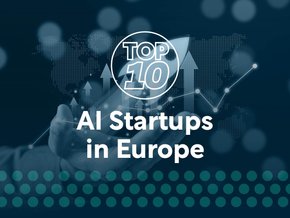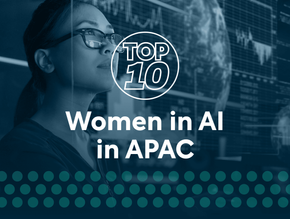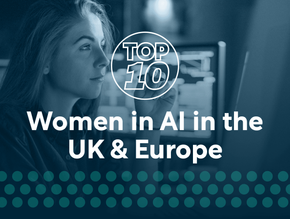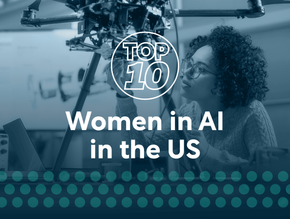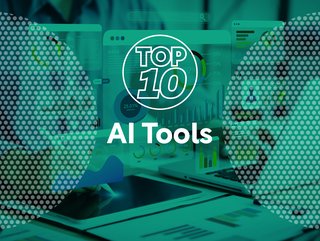
Many companies today are implementing AI tools into their own business practices, or subsequently creating the tools for others to benefit from. These tools can be used for a number of reasons, including increasing productivity and efficiency, improving decision-making, enhancing customer experience, reducing costs, and assisting with new product and service development.
For example, retailers are using AI tools to personalise the shopping experience for their customers, by recommending products and predicting demand, whereas financial institutions are using the tools to detect fraud, manage risk, and provide personalised financial advice to customers.
In healthcare, AI is used to diagnose diseases, develop treatment plans, and improve patient outcomes, while manufacturers are using AI to optimise production processes, improve quality control, and reduce waste.
AI Magazine takes a look at some of the world’s leading companies, and how AI technologies are set to continue developing.
10. Paradox.ai
Launched in 2016, Paradox is a conversational recruiting platform that utilises next-generation ATS, CRM, and Career Site solutions to automate 99% of the recruitment process. This includes features such as mobile application, automated screening, instant scheduling, and onboarding.
For candidates, Paradox allows employers to create a high-quality conversational experience for candidates at scale, using real-time, text-based interactions for applying, screening, scheduling, hiring, and onboarding.
For recruiters, Paradox’s software automates tasks like candidate screening, interviews, and more, saving recruiters significant time, allowing them instead to focus on building relationships with qualified talent.
9. TensorFlow
TensorFlow is a free and open-source software library designed for machine learning and artificial intelligence applications. Although it can be used across a variety of tasks, it has a particular focus on training and inference of deep neural networks.
Developed by the Google Brain team, TensorFlow was initially created for in-house Google research and production purposes. The first version was made available to the public under the Apache License 2.0 in 2015, and in September 2019, Google introduced the updated version known as TensorFlow 2.0.
TensorFlow can be used in a wide range of programming languages, such as Python, JavaScript, C++, and Java, making it suitable for a number of applications spanning different sectors.
8. Anthropic Claude-2
Consisting of former researchers who were part of OpenAI's GPT-2 and GPT-3 projects, Anthropic initiated the development of its own AI chatbot, Claude. Much like ChatGPT, Claude employs a chat interface that allows users to input questions or requests and obtain detailed responses.
Anthropic’s chatbot, Claude, is described as “a friendly, enthusiastic colleague or personal assistant who can be instructed in natural language to help you with many tasks.” Claude-2 offers enhanced performance, longer responses, and is accessible via API, along with a new public-facing beta website, claude.ai., that makes conversing with it simple and easy.
7. GrammarlyGo
Grammarly is an American cloud-based typing assistant that can review English texts for punctuation, clarity, engagement, and delivery mistakes, while also detecting plagiarism and proposing alternative solutions for the identified mistakes.
GrammarlyGO is the organisation’s on-demand generative AI tool that enables users to rapidly compose, rewrite, ideate, and reply. By being contextually aware, it considers the user's individual style and delivers relevant, personalised recommendations that reflect the user’s voice. GrammarlyGO seamlessly integrates with Grammarly's current product offerings and can be used in a wide range of desktop applications and websites.
6. NVIDIA CUDA-X AI
NVIDIA CUDA-X AI is a complete deep-learning software stack specifically tailored for researchers and software developers, enabling them to build high-performance GPU-accelerated applications designed for conversational AI, recommendation systems, and computer vision.
The CUDA-X AI libraries excel in delivering leading performance for both training and inference, as demonstrated by industry benchmarks like MLPerf. NVIDIA's unified programming model, built on CUDA-X, facilitates the development of deep learning applications on desktops and data centres, allowing for easy deployment on data centres, IoT devices with limited resources as as well as automotive platforms with minimal to no code changes.
5. Canva Magic Studio
Canva’s Magic Studio brings together the most advanced AI capabilities into a single platform. It seamlessly integrates with Canva, providing users with an enhanced creative process, from the initial ideas to the final product, with ease, speed, and innovation.
The platform promises to leverage the potential of AI, providing a range of features designed to streamline the design process. The platform’s features have been designed for ease of use, as well as to amplify the creative process and include Magic Design, Magic Switch, Advanced Image Editing Tools, Magic Media, Magic Animate, and Magic Write.
4. OpenAI DALL-E 3
Developed by OpenAI, DALL-E 3 represents the company's latest version of a text-to-image model, offering enhanced image detail and greater accuracy in rendering faces, text, and even human hands.
When provided with an idea, ChatGPT will automatically generate tailored, detailed prompts for DALL·E 3 that bring the user's idea to life. If a particular image is good, but it’s not quite right, through another prompt, users can ask ChatGPT to make tweaks with just a few words.
Just like in its previous versions, OpenAI has taken steps towards improving safety performance in risk areas such as the generation of public figures and harmful biases.
3. OpenAI ChatGPT
Created by OpenAI, ChatGPT was launched in November 2022 and is an AI-powered natural language processing tool that enables users to have human-like conversations and more with the chatbot. ChatGPT can respond to inquiries and support users in a range of tasks from composing emails and essays to writing code.
The ChatGPT tool has been trained from a huge amount of text from the internet and is designed to provide users with answers to questions, information, and engage in text-based dialogue. It has been used in a range of applications, such as chatbots, virtual assistants, customer support, and much more.
2. Adobe Firefly Image 2
Created on Adobe’s Sensei platform, Adobe Firefly has been designed to assist users in expanding upon their natural creativity. Serving as both a product and an embedded model within Adobe applications, Firefly provides generative AI tools tailored to creative requirements, applications, and workflows.
Built on the technology that Adobe has produced over the last 40 years in the creative industry, Firefly is designed to make it easier for people to bring their ideas to life. The Adobe Firefly Image 2 Model (beta) is a new and improved version of the Firefly Imaging Model.
By generating higher-quality images with better model architecture and metadata, training algorithm improvements, and better image generation capabilities, the Firefly Image 2 has been designed to help users create their vision quickly and easily.
1. Google Bard
Google Bard is a powerful large language model (LLM) chatbot, developed by Google AI that can answer a user’s questions or prompts on a range of different topics, with an almost human-like understanding. It can generate different forms of text-based content, such as poems, code, scripts, musical pieces, emails, or letters, as well as summarise text and translate between languages.
Bard is a highly versatile tool, that can be used to learn, create, and collaborate in new and innovative ways. It is powered by Google's own and most advanced LLM, PaLM 2, increasing Bard’s efficiency and enabling it to perform at a higher level.
A key difference between Bard and ChatGPT is that Bard has the capability to access and analyse data via Google Search, providing users with current information instead of being limited to the knowledge available up to 2021.
******
For more insights into the world of AI - check out the latest edition of AI Magazine and be sure to follow us on LinkedIn & Twitter.
Other magazines that may be of interest - Technology Magazine | Cyber Magazine.
Please also check out our upcoming event - Net Zero LIVE on 6 and 7 March 2024.
******
BizClik is a global provider of B2B digital media platforms that cover Executive Communities for CEOs, CFOs, CMOs, Sustainability leaders, Procurement & Supply Chain leaders, Technology & AI leaders, Cyber leaders, FinTech & InsurTech leaders as well as covering industries such as Manufacturing, Mining, Energy, EV, Construction, Healthcare and Food.
BizClik – based in London, Dubai, and New York – offers services such as content creation, advertising & sponsorship solutions, webinars & events.

